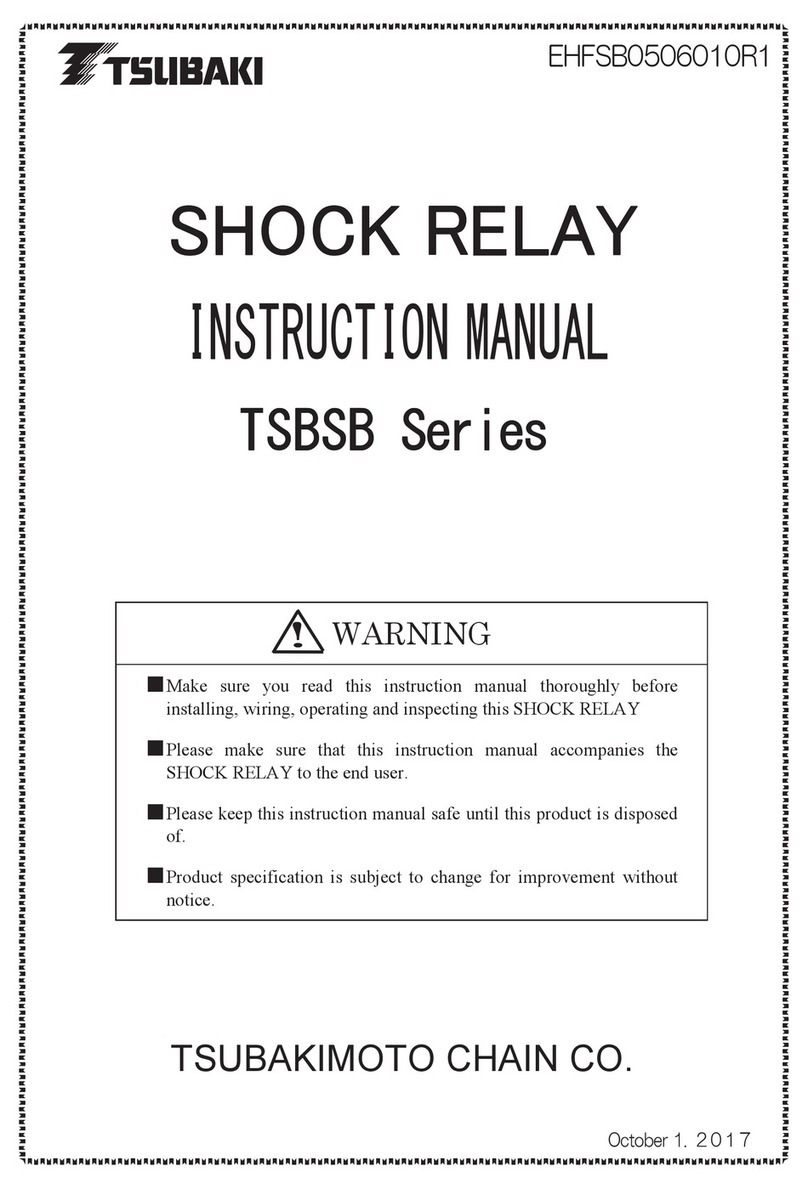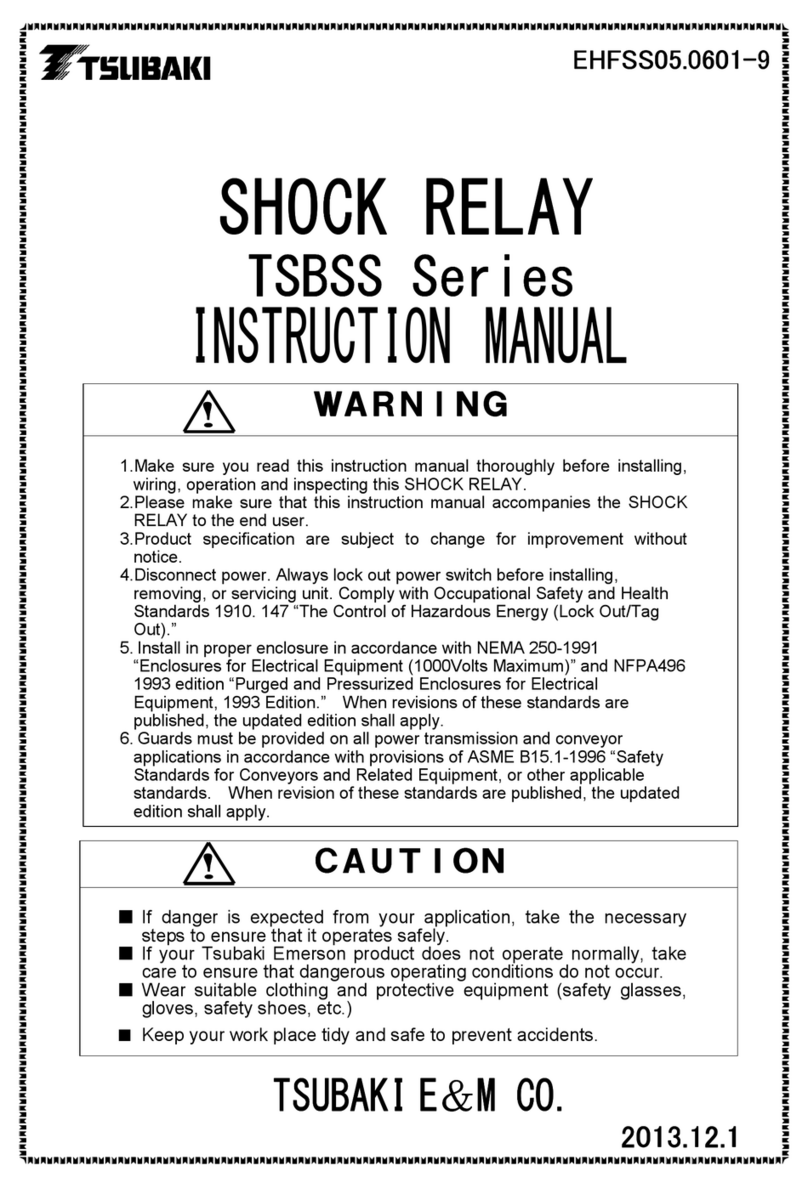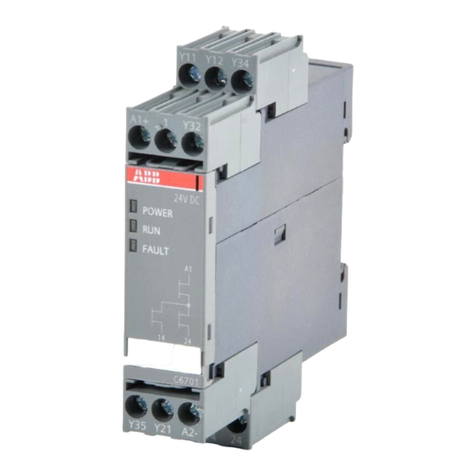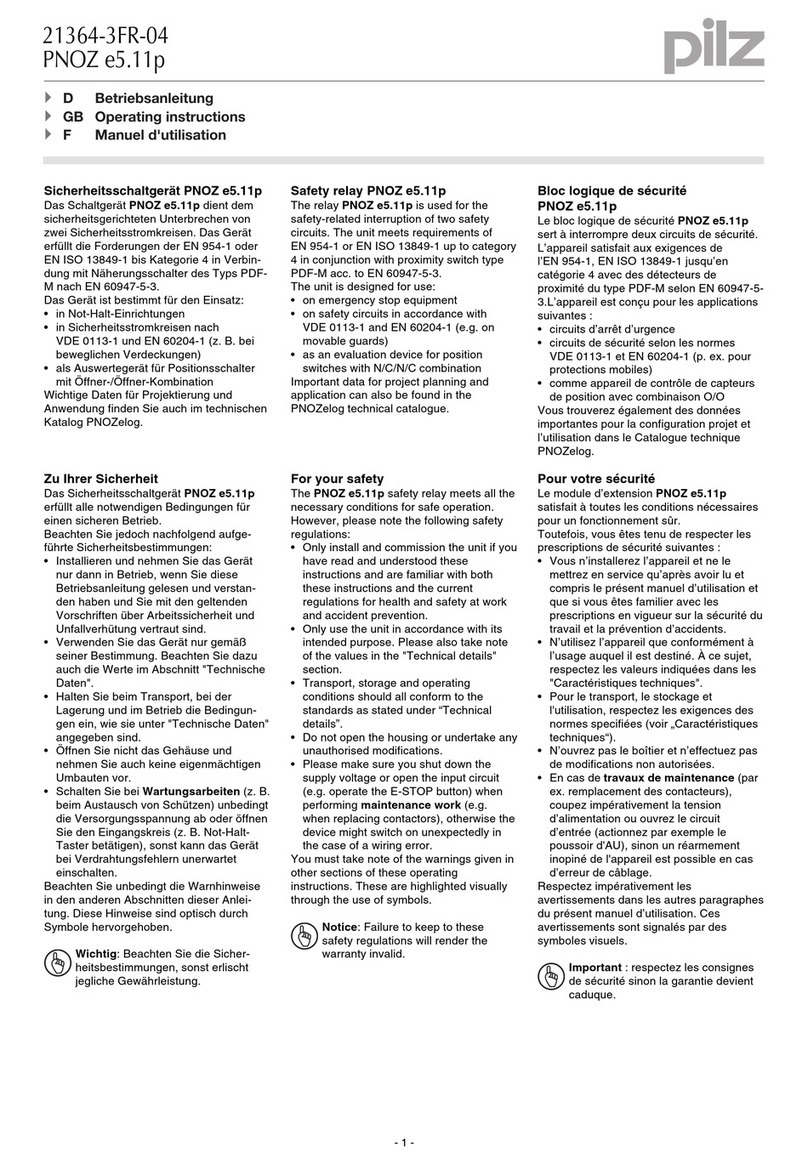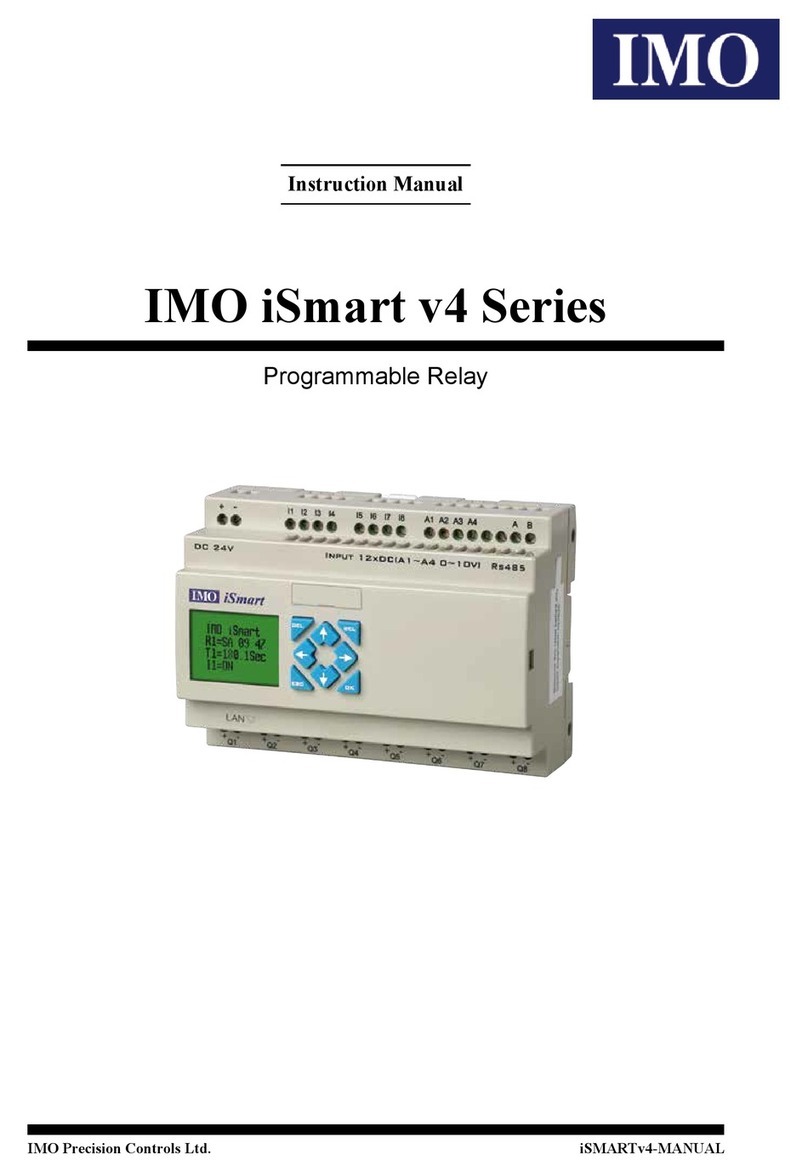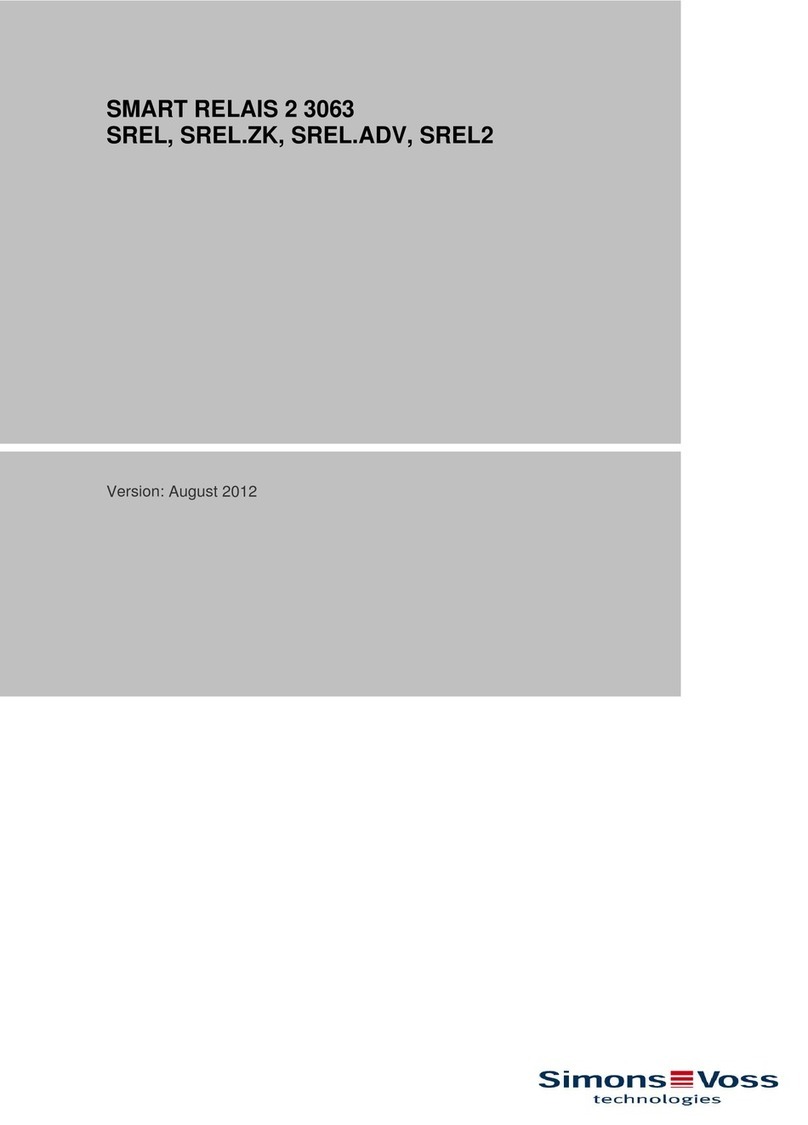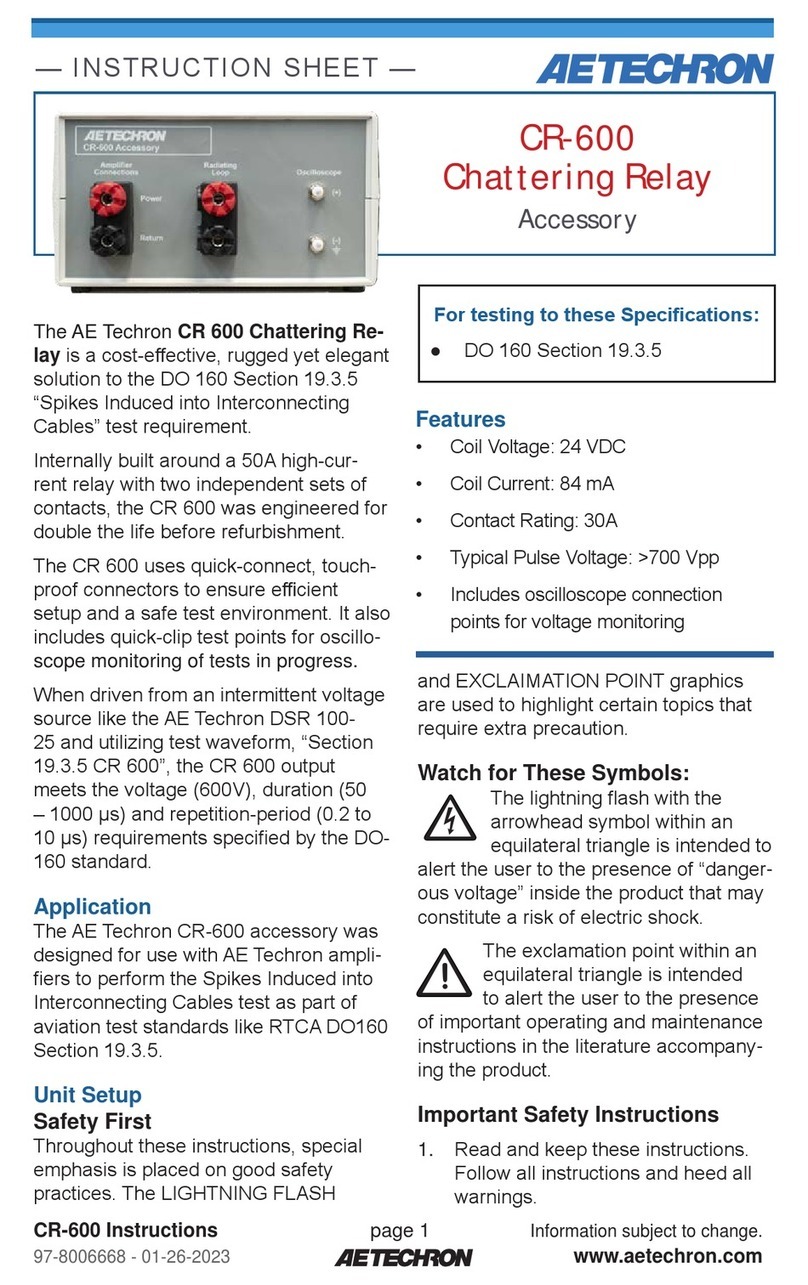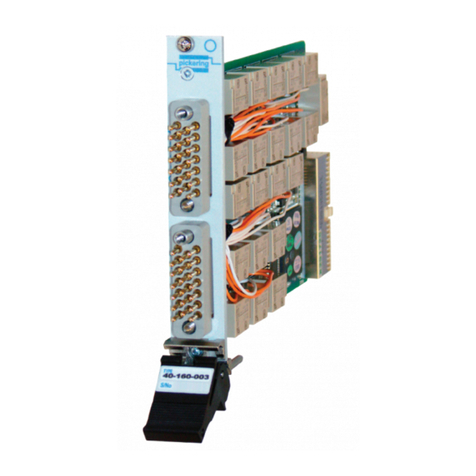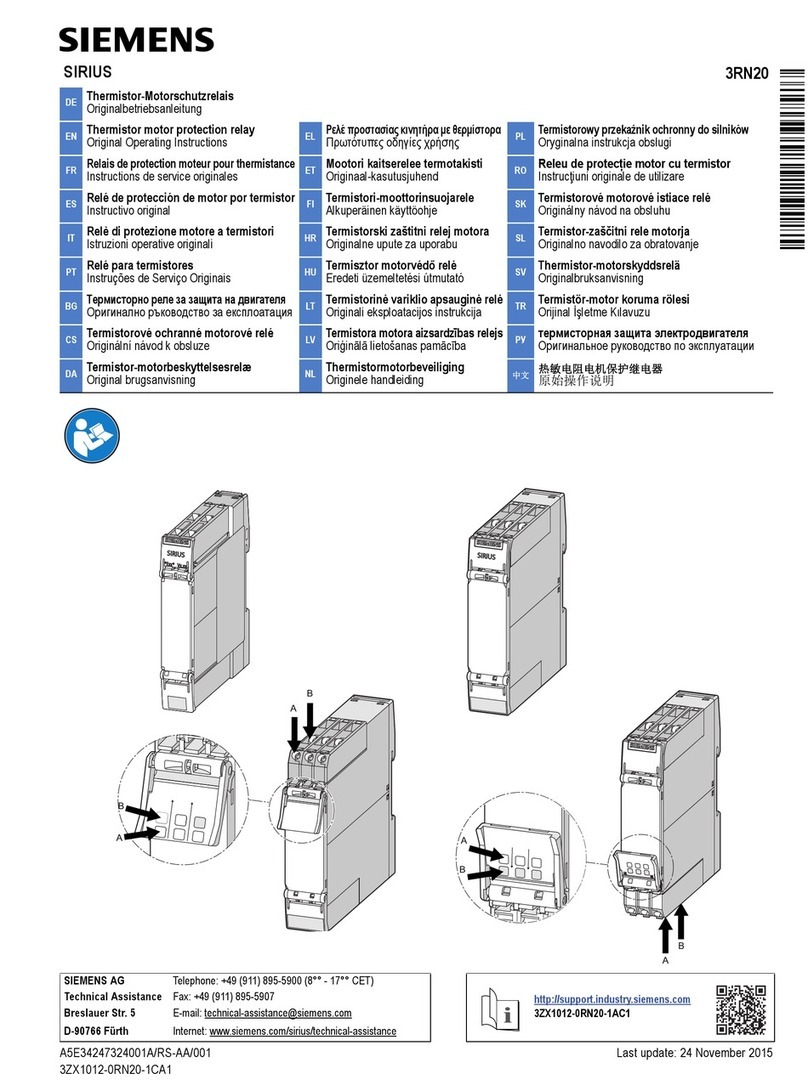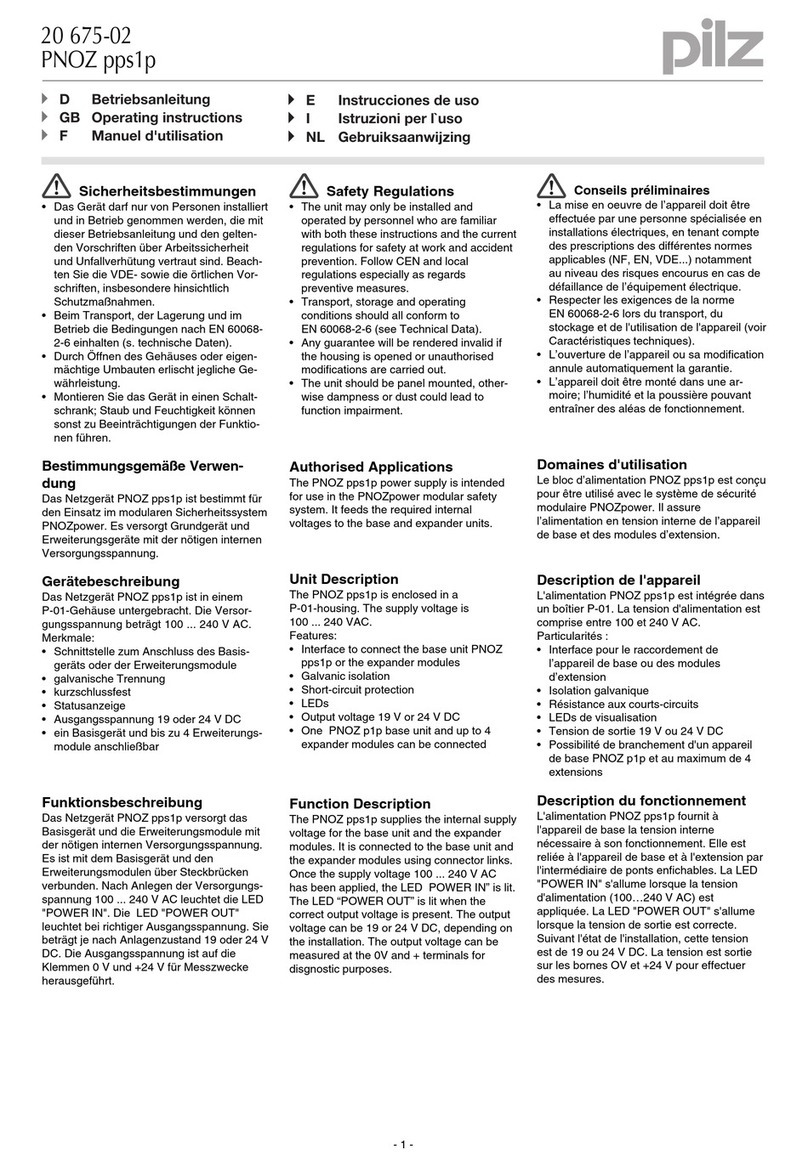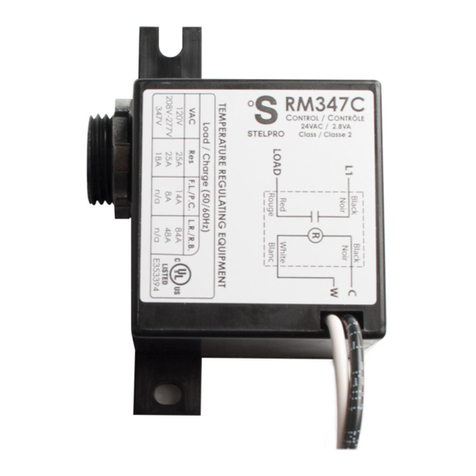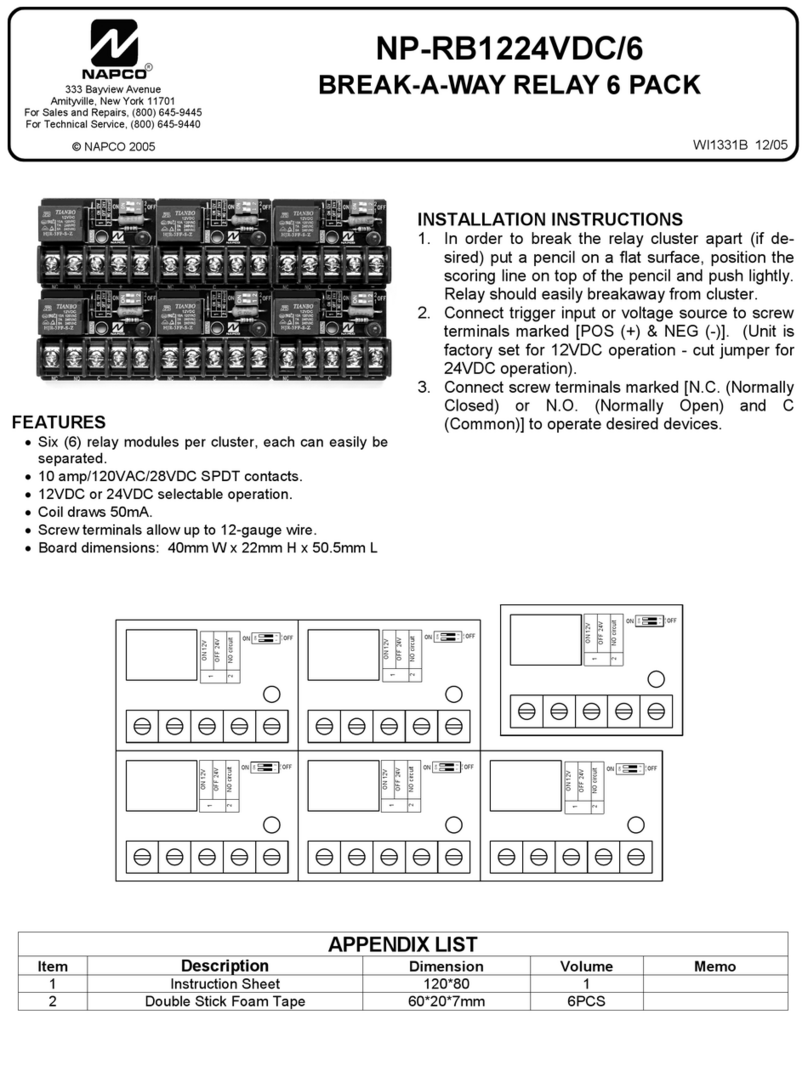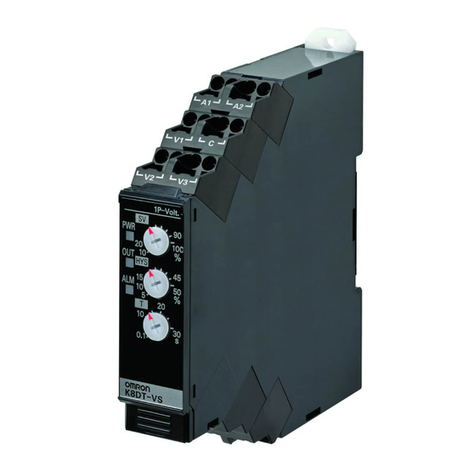Tsubaki TSBSU Series User manual

INSTRUCTION
MANUAL
TSUBAKI
TSUBAKITSUBAKI
TSUBAKI
E
EE
E&
&&
&M
MM
M
CO.
CO.CO.
CO.
WARNING
WARNINGWARNING
WARNING
1. Make sure you read this instruction manual thoroughly before installing,
wiring, operation and inspecting this SHOCK ELAY.
2. Please make sure that this instruction manual accompanies the SHOCK
ELAY to the end user.
3. Product specifications are subject to change for improvement without
notice.
4. Disconnect power. Always lock out power switch before installing,
removing, or servicing unit. Comply with Occupational Safety and Health
Standards 1910. 147 “The Control of Hazardous Energy (Lock Out/Tag
Out).”
5. Install in proper enclosure in accordance with NEMA 250-1991
“Enclosures for Electrical Equipment (1000Volts Maximum)” and NFPA496
1993 edition “Purged and Pressurized Enclosures for Electrical
Equipment, 1993 Edition.” When revisions of these standards are
published, the updated edition shall apply.
6. Guards must be provided on all power transmission and conveyor
applications in accordance with provisions of ASME B15.1-1996 “Safety
Standards for Conveyors and elated Equipment, or other applicable
standards. When revision of these standards are published, the updated
edition shall apply.
!
!!
!
CAUTION
CAUTIONCAUTION
CAUTION
■ If danger is expected from your application, take the necessary
steps to ensure that it operates safely.
■ If your Tsubaki Emerson product does not operate normally, take
care to ensure that dangerous operating conditions do not occur.
■ Wear suitable clothing and protective equipment (safety glasses,
gloves, safety shoes, etc.)
■
Keep your work place tidy and safe to prevent accidents.
!
!!
!
SHOCK RELAY
SHOCK RELAYSHOCK RELAY
SHOCK RELAY
TSB
TSBTSB
TSBS
SS
SU
UU
U
Series
SeriesSeries
Series
E
EE
EH
HH
HFSU05
FSU05FSU05
FSU0506
0606
0601
0101
010
00
0R
RR
R3
33
3
2
22
2
01
0101
01
4
44
4
.
..
.
7
77
7
.
. .
.
1
11
1

1
05 0.5 - 5 A
30 3 - 30 A
60 5 - 60 A
100 100 A
200 200 A
300 300 A
1. Preface
Thank you for purchasing the Shock Relay TSBS series.
This instruction manual describes everything from installation to adjustment.
Be sure to read this manual carefully before using your Shock Relay.
When delivering a device containing the Shock Relay, be sure that this instruction
manual is included.
2. TSBSU Model identification
TSB S 05 -1
Power Supply: 1:100V 2:200V
Current Range:
Series: S series
Model: Shock Relay
TSB 2CT 100
Rated Primary Current
2 Phase External CT
Model: Shock Relay

2
3. Dimensions
TSBSU
TSB2CT100
TSB2CT200
TSB2CT300
( nit mm 1inch=25.4 mm)
Attachment
Cover
Screw
Details for installation holes

3
4. Specifications
Model TSBS 05-* TSBS 05-*
TSBS 05-*
Current Setting*
1,2
0.5-5A 3-30A 5-60A
Shock Time Setting*
1
0.2-30s
Current Accuracy ±10% (Full scale )
Control Power Supply
(Model-*)
1 100~120VAC±10%, 50/60Hz
2 200~240VAC±10%, 50/60Hz
Maximum motor voltage 600VAC, 50/60Hz *
3
Current Sensing method 2 Integral Current Transformer
Output Relay Mode 1-SPDT(1c)
Contact Rating (max.) 3A / 250VAC cosφ=1
Contact Rating (min.) *
4
10VDC 10mA
Operation Normally De-energized
Reset Manual or Electrical (Interrupt power supply)
Expected Life 100,000 operations
Ambient Environment Temperatur
e
Operating -20 - +60℃ (-4 - +158 F)
Storage -30 - +70℃ (-22 - +176 F)
Humidity 45 – 85% RH without Condensation
Altitude 2,000m max.
Pollution degree Class 3
To be free from dust and corrosive gas
Vibration 5.9 m/s
2
or less.
Insulation Between casing and circuit
Over 10MΩwith 500 VDC Megger
Dielectric Strength Between casing and circuit
AC 2000V, 60Hz, 1min
Between contacts AC 1000V, 60Hz, 1min
Between circuits and
contacts AC 2000V, 60Hz, 1min
Protection Structure IP20
Power Consumption Less than 2VA
Material Case pper:PA6, Bottom:PA66
Terminal cover PA6
Mounting 35mm DIN rail or Panel
Dimension(W x H x D /Including Integral CT Windows)
54 x 72 x 64.5 mm
Approximate Weight 0.2 kg
*1 Current setting and Shock time setting show assignable value and these value don’t show
upper limit or lower limit.
*2 In case that motor current exceed upper of current setting, all model are acceptable to under
current 100A
*3 When Shock Relay is used with Inverter, the output frequency of Inverter should be from 30Hz
to 60Hz.
*4 Be careful of the contact detect with the output of shock relay , when the little electric current
drive.
*5 Current and time setting ranges can be set within the warranty range, but not the upper or
lower level of setting volume.

4
5. Installation
1. Environmental specifications
Install the Shock Relay in the following environment.
• Temperature: -20 to +60℃ not in direct sunlight.
• Humidity: 45~85% relative humidity without condensation and freezing.
• Place: Indoors, no water splash.
• Atmosphere: Free from dust, corrosion gas, and oil mist.
• Height: 2000m or less above sea level.
•
Vibration: 5.9m/s
2
and under.
2. Installation to t e panel
(1) Installation with DIN rail
While pulling the hook of Shock Relay to the arrow direction, install Shock Relay
to 35mm DIN rail. When removal, put the hook to the arrow direction with
flathead screwdriver.
(2) Installation with screw
Put the plate for installation at the both side or Shock Relay, and install Shock
Relay to the panel
3. Installation to t e DIN rail
(1) Pull the hook on the Shock Relay in the direction of the arrow to remove the
mounting bracket.
(2) Install the Shock Relay to the DIN rail.
6. Wiring
(1) Connect power source to the terminal A1- A2.
Never connect the output of an inverter or a servo driver to terminals A1-A2.
Install an insulation transformer between the power line and terminals A1-A2 of
the SHOCK RELAY when harmonic noise is included in the power line.
(2) Check and correct the following items before turning the power on.
a. Is there any misconnection?
b. Have you forgotten to complete any connections?
c. Are there any abnormal conditions such as a short-circuit or ground fault?
WARNING ELECTRICAL SHOCK AND BURN
Do not operate without the ground wire connected.
7. Terminal Function
Terminal
Function
. Contents.
A1 Power
Supply
commercial power supply is wired
A2
95 Output
Relay
Common
96 Normally close
98 Normally open
!
!!
!
A1
A2
95
96
98
Pull a hook in the direction of the arrow with a screwdriver to
remove the bracket.
Mounting hole
hook
63
2-M4
Attachment

5
8. Current Transformer
Select the number of wires passing through the CT (Current Transformer) by using the following
table for best performance. When two motor leads pass through the CT, the current sensed by
the CT is twice the motor current flowing through the motor lead.
AC 200 ~ 230 Volt Motor
AC 400 ~ 460 Volt Motor
Motor
Capacity
(kW)
Motor
Capacity
(Hp)
TSBS
TYPE
Wires
passing
through CT
Motor
Capacity
(kW)
Motor
Capacity
(Hp)
TSBS
TYPE
Wires
passing
through CT
0.1 1/8 TSBS 05-2
4 - - - -
0.2 1/4 TSBS 05-2
3 0.2 1/4 TSBS 05-2
4
0.4 1/2 TSBS 05-2
2 0.4 1/2 TSBS 05-2
3
0.75 1 TSBS 05-2
1 0.75 1 TSBS 05-2
2
1.5 2 TSBS 30-2
3 1.5 2 TSBS 05-2
1
2.2 3 TSBS 30-2
2 2.2 3 TSBS 05-2
1
3.7 5 TSBS 30-2
1 3.7 5 TSBS 30-2
3
5.5 7-1/2 TSBS 30-2
1 5.5 7-1/2 TSBS 30-2
2
7.5 10 TSBS 60-2
1 7.5 10 TSBS 30-2
1
11 15 TSBS 60-2
1 11 15 TSBS 30-2
1
- - - - 15 20 TSBS 60-2
1
- - - - 18.5 25 TSBS 60-2
1
- - - - 22 30 TSBS 60-2
1
9. Basic wiring diagram
1) Basic wiring diagram
Power Supply Note.
1. A transformer may be required, depending on
the voltage of Motor (i.e. over 240VAC)
2. Output relay is normally de-energized. When
Shock Relay trips, the contacts change state.
3. Two of three phases of the motor are passed
through the Shock Relay’s CT.
4. Shock relay shall be to be turned on at the
same time as MC is turned on.
In case that Shock time is less than 1.5
seconds, it is possibility that Shock Relay trips.
5. If the capacity of the operating
electromagnetic coil of the electromagnetic
contactor is above 200VA during closing time
or 20VA during holding time, then drive a
secondary relay with the relay output, and
open and close the electromagnetic contactor
with the contacts of the secondary relay.
MC : Magnetic contactor
ON : Start switch
OFF : Stop switch
Fuse : Fuse
Tr : Transformer
M : T
HREE-PHASE
M
OTOR
98
96
95
A2
A1
TSB
MC
OFF
ON
MC
Fuse
Tr CB
R S T
M
MC
Fuse

6
2) Wiring diagram for Manual reset.
M : T
HREE-PHASE
M
OTOR
Note. 1. Set Shock Time setting at more than 3 seconds and set Off Delay
Timer at less than 1.5 seconds.
2. In case of using external CT, motor wiring are passed through
hole of external CT.
Power Supply
98
96
95
A2
A1
TSB
T
OFF
ON
Fuse
Tr
R S T
M
MC
RY
RY T
MC
Off Delay
Timer
MC
ower
Supply
side
Motor
side
External CT
TSB2CT
SHOCK RELAY

7
O TP T
POWER
INP T
95 96 98 A1 A2
RESET
button
C RRENT
knob
TEST
button
MON L
ED
S
HOCK
TIME knob
CT
C
L
ED
10. Construction
Description
Shock Relay senses the motor current passing through the two CTs and automatically
detects the starting of the motor.
Shock Relay S series detects the under current by comparing the CT-sensed motor
current with the trip current that is preset with the C RRENT knob.
When the motor current falls off the preset trip current level, the Shock Relay trips after the
trip delay that is preset with the SHOCK TIME knob.
Every time that the Shock Relay trips, always investigate the cause of the under current and
correct the cause.
Release the tripped Shock Relay by pressing the RESET button or by shutting power down
before restarting the equipment.
Shock Relay lights the C LED when sensing a smaller current than preset with the
C RRENT knob and remains lit after the relay trips.
Shock Relay provides a TEST button to confirm the operation of the output relay and the
SHOCK TIME. The Shock Relay trips after the SHOCK TIME when the TEST button is
pressed and held.
*1 In case of basic wiring diagram, Shock Relay is turned off after trip.
Start
SHOCK RELAY
TRIP
Motor current
Ampere
Time
A Preset
Current
nder load
Output Relay
Motor Stop
B
SHOCK TIME B SHOCK TIME
Power Supply
MON
UC
*1

8
11. Set up
1. Set SHOCK TIME knob (trip delay timer) at the desired trip time.
2. Set C RRENT knob (trip current) at the desired current of the motor.
3. Supply control voltage to the Shock Relay.
4. Start the motor and then slowly turn the C RRENT knob counter counterclockwise until
the Shock Relay flashes C LED. At this point, the C RRENT knob indicates 100% of
the motor running current.
5. Set the C RRENT knob at the proper trip current.
12. Troubles ooting
Symptom Check Result Treatment
“MON” lamp isn't
turned on.
Check the operation power supply
wiring.
(between terminals A1 and A2)
Incorrect wiring. Wire correctly
Measure the voltage of the
operation power supply with a
tester.
(between terminals A1 and A2)
Not predefined voltage. Set predefined voltage
Predefined voltage Repair or replace.
Just after starting,
the relay begins
operating.
Check the value of C RRENT. Set too high Set to suitable level.
Check the value of SHOCK TIME.
Set too short Set to suitable time.
The relay output
does not operate.
Check the Current level setting. The Current level setting is
inappropriate.
Set to suitable level.
Check the SHOCH TIME setting. Set too long Set to suitable time.
If replacement of the shock Relay is necessary, please make contact with our company office.

9
13. Maintenance
(1) To prevent an accident, keep the surrounding area clean and create a safe environment.
(2) Before checking the installation and connection of the Shock Relay, turn off the power source.
Be sure that the equipment is completely stopped and the MON of the Shock Relay is off.
Make sure that the power source is locked out and cannot be accidentally turned on.
14. Daily c eck and periodic c eck
(1) Confirm that there is no looseness in the installation of the Shock Relay and current
transformer. Check the wiring connections every six months.
(2) Regularly check the function of the output relay, terminal 95-96, terminal 97-98, by pressing
the TEST button.
(3) A typical life time of electrolytic capacitor mounted in the SHOCK RELAY is about 10 years at
an average ambient temperature of 30℃, but this lifetime may vary with a different ambient
environment and with the operating period when power is supplied. We recommend you to
exchange the Shock Relay for a new one before trouble occurs.
15. Point for safe use
(1) Take measures beforehand to prevent danger when using a TS BAKI EMERSON product.
(2) If our product begins to operate improperly, be sure to take measures to prevent a
dangerous situation from arising.
16. Warranty
1
11
1. Range of warranty
With regard to any troubles happened to our products, replacement or repair of such troubled
parts will be provided for free of charge during the effective period of warranty, provided that
installation and maintenance/management of said products have been performed properly
pursuant to the description of this instruction manual and said products have been used under
the condition described in the brochures or agreed separately through mutual consultations.
The content of warranty is limited only to the Shock Relay itself delivered to you and the
judgment thereof will be made by our selection because such judgment pertaining to the range
of warranty is often complex.
2
22
2 . Warranty period
The warranty period shall be either 18 months after shipment from our factory or 12 months
after starting operation, whichever is shorter. Any and all inspection/repair undertaken by us
after the above warranty period has passed will be charged. Should questions arise, please
do not hesitate to contact us or the dealer from whom you purchased.
3
33
3 . Miscellaneous
(1) Any matters described in this instruction manual are subject to change without notice.
(2) We have tried our best in preparing the contents of this instruction manual. Should any
mistake or oversight be found, we will be more than happy if you would advice us of them.

MEMO

This manual suits for next models
3
Table of contents
Other Tsubaki Relay manuals
